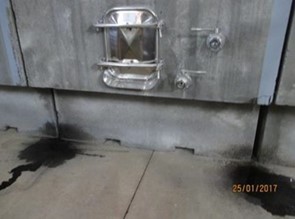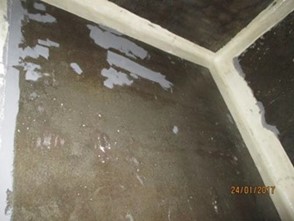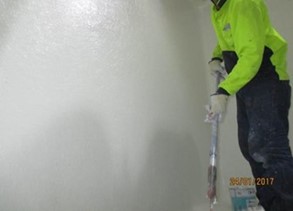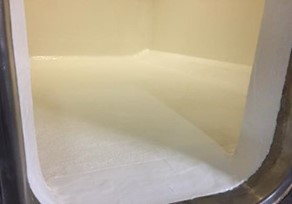



OVERVIEW: Strict health, safety and quality standards govern the world of food and beverage manufacturing. These apply to the equipment and materials used during the various stages of the production process. Selecting the right protective coating and application techniques for industrial environments such as wine and beer production play a significant role, particularly in the treatment and prevention of cracks, leaks and corrosion.

INDUSTRY
ENVIRONMENT
Wine Production
SUBSTRATE
Aged Concrete Tank
CHALLENGE
Chemcote was tasked with refurbishing a wine tank which had succumb to leaks. Following an inspection, Chemcote identified the source of the leaks and that the previous solution applied to the tank was not FDA approved. This had contributed to thousands of litres of wine being tainted.
The existing delaminating coating system needed to be removed and replaced with a sound coating solution. Key issues included repairing the leaks in the concrete tank, pit filling and lamination of all construction joints, and applying the new coating to the internal tank lining in a confined space.
SOLUTION
The first step of the refurbishment process involved removing the existing tank lining by destructive methods and abrasive blasting to provide a surface profile.
The team recommended Damp-crete™ RH 800 concrete primer due to its extreme moisture tolerance, followed by Chem-concrete™ RI 800 for the deep pitted areas and any joints that required filling.
Epo-chem™ RB 500 was applied as a top coat, and Chopped Strand Mat laid to prevent the coating from cracking in response to precast concrete movement. This system is known for its extremely fast turnaround and curing time.
A three-day curing period was required for the application of all the above coatings prior to the operation returning to service.
SCOPE
Remove existing lining of the wine tank by destructive methods and abrasive blasting to provide a surface profile. Application of coatings as above, allow to cure for 3 days prior to return to service.
PRODUCTS
Damp-crete™ RH 800 (Concrete Primer)
Chem-concrete™ RI 800 (Flexible filler)
Epo-chem™ RB 500 (Wine & Beer Approved)
OUTCOME
The first step of the refurbishment process involved removing the existing tank lining by destructive methods and abrasive blasting to provide a surface profile.
The team recommended Damp-crete™ RH 800 concrete primer due to its extreme moisture tolerance, followed by Chem-concrete™ RI 800 for the deep pitted areas and any joints that required filling.
Epo-chem™ RB 500 was applied as a top coat, and Chopped Strand Mat laid to prevent the coating from cracking in response to precast concrete movement. This system is known for its extremely fast turnaround and curing time.
A three-day curing period was required for the application of all the above coatings prior to the operation returning to service.
RELATED CASE STUDIES
Preventing blockages using Chemcote Solution
Condition of surface before mechanical preparation RB 364 applied to spot abrasive blasted surfaces Pugmill externals Coating with InD Cote Previous Next OVERVIEW: A
Base Plate Corrosion Prevention
Repairs required Application of Primer Coating applied to affected areas After application of Topcoat Previous Next OVERVIEW: A 40 year old excess gas bleeder structure
Industrial Fallout Protection
After whip abrasive blasting Application of Epo-chem system to internals Basalt Fibre application on internals OVERVIEW: A steel production plant contracted Chemcote to reinforce


